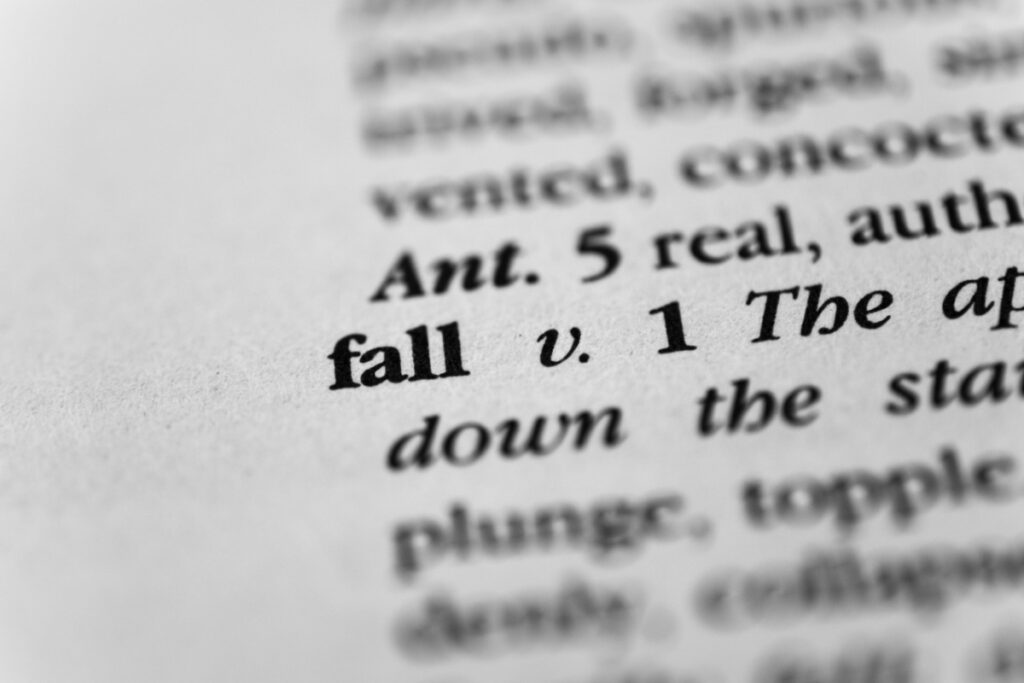In Australia, slip and fall accidents represent a significant area of personal injury law, with cases regularly appearing before courts across the country. These example cases showcase how important the duty of care owed by property owners, occupiers, and businesses is for themselves and others.
Slip and fall accidents can happen anywhere, at any time; accordingly, there are multiple legal pathways to compensation depending on where and when the injury occurred. If the injury occurred in a public place or a business, an individual may be entitled to make a public liability compensation claim. If the slip or fall happened in a workplace while performing their job, an individual may be entitled to make a workers compensation claim instead.
Fair compensation for a slip and fall may include a lump sum payout, reimbursement for medical expenses, damages for lost wages, and more. We recommend that individuals seeking to claim compensation should work with experienced workers compensation or public liability law experts to ensure the best possible outcome for themselves.
In this article, we examine several newsworthy slip and fall negligence cases in Australia, providing valuable insights into how the courts determine liability and compensation in these matters. If you believe you are eligible to make a slip and fall claim, you should speak with experienced compensation lawyers as soon as possible.
Furner v Jackson: Open Home Visitor Receives $1.5 Million After Fall
The Claim
In January 2020, Mrs. Kellie Furner (wife of rugby league figure David Furner) attended an open home inspection of a residential property in Garden Suburb, New South Wales. While walking down the driveway to access the house, Mrs. Furner slipped and fell. After being helped to her feet by her husband, she slipped again after taking just a few steps. Mrs. Furner’s medical reports showed she sustained severe injuries to her right hip, elbow, and neck, which ultimately required multiple surgeries including a C6/7 disc replacement.
Mrs. Furner brought a public liability claim against both the property owners and the real estate agent who was conducting the open home inspection. The owners had painted the driveway approximately one week before the incident, which Mrs. Furner alleged had made the surface dangerously slippery, particularly when wet.
The Decision
The NSW Supreme Court determined that both the owners and the agent were negligent in their duty of care. The Court found that:
- The agent was considered the occupier of the property for the purposes of the open home inspection.
- Both the owners and agent owed a duty of care to ensure visitors could safely enter and leave the property.
- Expert evidence confirmed that the paint used on the driveway created a real and foreseeable risk, especially when wet.
- The risk of slipping on the steep, shiny driveway was foreseeable and not insignificant.
- The Court rejected the owner’s claim that they had purchased slip-resistant paint, as there was no corroborative evidence to support this.
- At minimum, the agent should have warned prospective purchasers about the slippery driveway or blocked off the hazardous areas.
Justice Harrison also rejected the agent’s claim that she was unaware of the driveway issue prior to the incident, as text messages proved otherwise.
In this case, Mrs. Furner was able to prove her injuries was due to someone else’s negligence and was successful in making a slip and fall compensation claim.
Compensation Outcome
The Court found in favour of Mrs. Furner and awarded damages totaling $1,336,812, which included:
- General damages assessed at 45% of the most extreme case: $352,500
- Past and future expenses: $220,000
- Past loss of income: $200,000
- Future loss of income: $400,000
- Future care: over $200,000
This case highlights that both property owners and real estate agents have a significant duty of care when conducting open home inspections, and must take reasonable precautions to identify and address potential hazards.
McQuillan v Woolworths: Grape Slip Case Overturned on Appeal
The Claim
In November 2012, Colleen McQuillan slipped on a grape in the fruit and vegetable section of a Woolworths supermarket in Leichhardt, Sydney. The incident occurred shortly after the store opened at 10 AM on a Sunday. McQuillan initially succeeded in her lawsuit against Woolworths and was awarded $151,000 in the NSW District Court.
The Decision
The NSW Court of Appeal upheld Woolworths’ appeal and dismissed McQuillan’s claim, finding that the supermarket giant had not been negligent. The three appeal judges determined that:
- There was no evidence of any activities by Woolworths staff before 10 AM that were likely to have dislodged a single grape.
- The grape was unlikely to have been on the floor before the store opened at 10 AM.
- Staff looking for grapes on the floor could have been impeded by customers, trolleys, and baskets before McQuillan fell.
- The district court judge had incorrectly rejected other possibilities regarding how the grape came to be on the floor.
Compensation Outcome
Although initially awarded $151,000 in damages by the district court, this award was overturned on appeal, and McQuillan ultimately received no compensation.
This case demonstrates that establishing negligence in slip and fall cases requires proving that the business failed to implement reasonable inspection and cleaning systems, and that they had adequate time to identify and remove the hazard.
Hill v Coles: Woman Awarded $292,335 After Supermarket Slip
The Claim
Ms. Hill suffered a serious injury to her left ankle after slipping on the floor near a refrigerated cabinet filled with fruit and vegetables at a Coles supermarket in Western Sydney. Ms. Hill had been wearing thongs at the time of the incident, and the injury later required surgery.
The Decision
Although Coles argued that Ms. Hill had sustained the injury due to her own negligence by not avoiding an obvious hazard, Judge Mahony of the NSW District Court ruled in her favor. The judge determined that:
- There was a breach by Coles of its duty of care to Ms. Hill.
- “But for” such breach, Ms. Hill would not have suffered the injury she did.
- The defense’s argument that Ms. Hill’s choice of footwear contributed to the accident was rejected.
In assessing damages, the court considered Ms. Hill’s surrounding circumstances, including the effects of the injury on her mobility and her ability to carry out domestic, recreational, and social activities. The court also took into account her husband’s disability and his inability to assist Ms. Hill with domestic chores.
Compensation Outcome
Ms. Hill was awarded $292,335 in damages by the NSW District Court.
This case highlights that supermarkets have a high duty of care to ensure floors are safe for customers, and that arguments about contributory negligence based on footwear choice may not necessarily succeed.
GET HELP NOW WITH YOUR PERSONAL INJURY
Get in touch with our Personal Injury Compensation team
Key Lessons from Australian Slip and Fall Cases
These cases provide valuable insights into how Australian courts approach slip and fall negligence claims:
- Duty of Care: Property owners, occupiers, and businesses owe a duty of care to visitors, customers, and the general public to provide safe premises.
- Foreseeability of Risk: A key element in establishing negligence is whether the risk was foreseeable and not insignificant. Courts will consider whether a reasonable person would have anticipated the risk.
- Reasonable Precautions: Those who owe a duty of care must take reasonable precautions to prevent foreseeable risks. This may include regular inspections, prompt cleaning of spills, adequate warning signs, and barricading hazardous areas.
- Burden of Proof: The plaintiff must establish that the defendant breached their duty of care and that this breach caused the injury. However, courts will consider the totality of the circumstances.
- Contributory Negligence: While defendants may argue that the plaintiff contributed to their own injury (e.g., through choice of footwear or inattention), courts will assess whether this argument has merit based on the specific circumstances.
- Documentation: Maintaining adequate records of safety protocols, inspections, and incidents is crucial for defendants in these cases, as demonstrated by the text messages that undermined the real estate agent’s defence in the Furner case.
Implications for Property Owners and Businesses
These cases underscore several important considerations for property owners, real estate agents, and businesses:
- Risk Assessments: Regular risk assessments should be conducted to identify potential hazards.
- Maintenance Protocols: Establish clear protocols for maintenance, cleaning, and addressing hazards.
- Training: Staff should be trained to identify and address potential slip and fall hazards promptly.
- Warning Signs: When hazards cannot be immediately removed, appropriate warning signs should be displayed.
- Record Keeping: Maintain detailed records of inspections, maintenance, and any incidents that occur.
- Insurance: Ensure adequate public liability insurance is in place to cover potential claims.
Key Takeaways
- Slip and fall accidents can result in significant compensation claims through either public liability or workers compensation pathways, with successful cases potentially covering medical expenses, lost wages and other damages.
- The Furner v Jackson case resulted in a $1.3 million payout when a woman fell on a freshly painted, slippery driveway during an open home inspection, establishing that both property owners and real estate agents have significant duty of care obligations.
- Woolworths successfully appealed a grape slip case (McQuillan), demonstrating that plaintiffs must prove businesses failed to implement reasonable inspection systems and had adequate time to identify hazards.
- Australian courts determine slip and fall negligence based on duty of care, risk foreseeability, reasonable precautions taken, burden of proof, and potential contributory negligence.
Legal Advice for a Slip and Fall Compensation Claims
Slip hazards can happen at any time – at work, while shopping, or even while visiting another persons home. Seeking professional legal advice early can help ensure you receive fair compensation for your injuries and losses.
Our team are specialists in personal injury matters, from motor vehicle accidents to cases of negligence and even TPD claims. Whether you need help with a workers compensation claim or you’re looking for a public liability lawyer, we can help with your slip and fall claim.
Burke Mead Lawyers offers a free consultation to discuss your case –contact our legal experts today.


